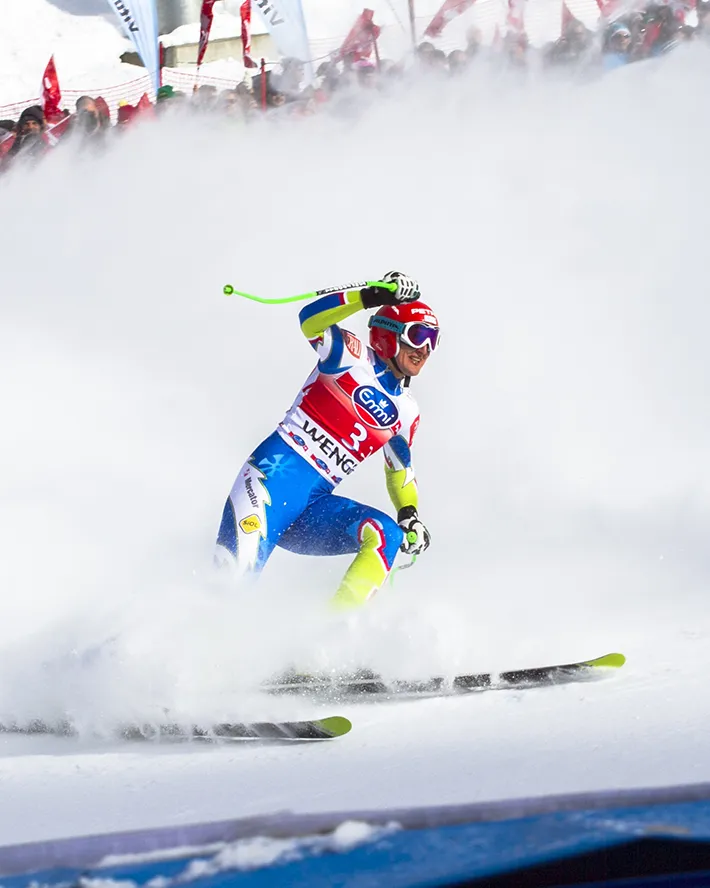Ski racing has a rich history dating back to the early 20th century, when the sport first began to gain popularity in Europe and North America. Over the years, many legendary ski racers have emerged, pushing the boundaries of what was thought to be possible and leaving a lasting impact on the sport. In this blog post, we will take a look at some of the pioneers who changed the game and helped shape the sport of ski racing into what it is today.
5 ways to improve your skiing in summer
It's the first week in July and although I'm enjoying the long spell of warm weather we've been having, I'm still thinking about how I can develop my skiing and planning out what training I could do over the summer to set me up in great shape for next winter. Here are some thoughts:
1. Dry slope skiing.
If you read this blog regularly you'll know that I'm a big fan of dry slopes. They're relatively cheap to use, there's one to be found within easy reach of most parts of the country, and they're great for your skiing as any little glitches will show up very easily. I don't think it's any surprise that some of the UK's best skiers and boarders have come out of the dry slope scene, which gave them a chance to slide regularly throughout the year. If you're really keen, you can take lessons or even try out dry slope ski racing. There are many ski race clubs based at dry ski slopes, and an extensive set of local, regional and national ski races held over the summer.
2. Ski indoors on artificial snow.
Much as I enjoy dry slope skiing, I will admit that it's maybe not my first choice activity on a baking hot day, when the combination of long sleeves, gloves and sun can make for a sweaty experience. So instead, why not try out an indoor snow slope? There a currently six of these in the UK (in Hemel Hempstead, Milton Keynes, Tamworth, Manchester, Castleford and Glasgow). Typically the slopes are about 150-200m long, so they're great for practicing drills. Alternatively, if you'd like some instruction, there are plenty of one day courses available, such as the Warren Smith Moguls Course that I reviewed previously.
3. Take a ski course on a glacier.
There are plenty of all year round ski areas in Europe, including Tignes and Les Deux Alpes in France, Hintertux, and Soelden in Austria, Zermatt and Sas Fee in Switzerland, Folgefonna in Norway and Cervinia (linked with Zermatt) in Italy. While you won't get the same extent of skiing that you'd get in winter, typically these resorts offer 20-30 km of piste skiing. On the whole, glacier skiing tends to be on blue or red slopes and there's no potential for off-piste skiing, given the crevasse risk- this relatively limited environment can therefore be very useful for skills development via an instructional course, like the Snoworks Race Carve Course I reviewed earlier. Skiing on a glacier tends to be a morning activity, as the snow gets heavy in the afternoons. The upside to this is that there's plenty of time to try out the huge range of other activities that are on offer in many of these centres, including mountain biking, via ferrata, walking, climbing, rafting or other water sports, or if you feel like it just relaxing with nice food and drink.
4. Go skiing in the southern hemisphere!
Of course, our summer is their winter, so if you have the cash, a trip to Chile, New Zealand or Australia could be just the ticket to extend your ski season. Chile has some well known international ski areas, such as Portillo and Valle Nevado, both of which are within a 2 hour drive of Santiago, as well as a host of smaller and more remote ski fields. Combine with a wine tasting tour, or a visit to the splendours of Patagonia, the Atacama desert or the Torres del Paine National Park for a spectacular trip! The main skiing centre in New Zealand is around the beautiful Queenstown area, with scenery made famous in Lord of the Rings, where there are high quality international resorts such as Coronet Peak, Mount Hutt and The Remarkables Ski Area. There are also a host of interesting "club ski fields", which are small and friendly operations, often with just one or two ski lifts. A legendary example is Criagieburn, about two hour from Christchurch, which offers a large lift-served off piste area with mellow bowls as well as some super-steep and narrow chutes (see the video below of the terrain available). Many people consider this ski area to be the best in New Zealand for intermediate to expert skiers (it's not really suitable for complete beginners as there are not pisted runs). As an aside, one of my ski instructor buddies did 9 continuous winters by alternating between Europe and New Zealand! Now that's keen.
5. Get ski fit with cross-training and strength excercises.
Unlike jetting off to New Zealand, this is something that we all can do at very little expense. I've realised as I'm getting older that I can't just rock up to ski and expect to have the same performance level as I had when I was younger. I've therefore started to put a lot more effort into summer dry land training. In the past I've tended to focus on aerobic training using a combination of cycling and running, but for the past year or so I've added in strength exercises, focusing on legs and core. Recently I've added in use of a BOSU ball, which can give a good strength or cardiovascular workout, while also training balance as it provides an unstable surface. I don't know whether in reality this translates to better ski balance, but since Lyndsey Vonn uses one I guess it can't hurt! I've pasted a video below that suggests some ski-relevant exercises. Disclaimer- be careful with the BOSU, it's easy to fall off- the video shows how to get on and off safely. Click this link if you want a really comprehensive BOSU ball work out.
So those are my ideas for this summer. Realistically I'll definitely be doing #'s 1 and 5, may do #2, but probably won't do #'s 3 and 4 this year. How about you? As always, I'm interested to read comments.


